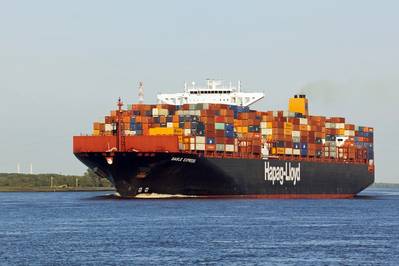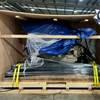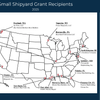COVID-19 Cuts a Swath Through Containership Charter Earnings -MSI
While the implications of COVID-19 for containership demand and freight rates are directionally clear, the time charter market often marches to its own drum.
The latest Container Shipping Forecaster from Maritime Strategies International analyzes the impact of the pandemic on time charter markets in the light of reduced demand and falling fright rates.
Containership time charter rates have broadly retreated in recent weeks, and since the start of 2020 the majority of benchmarks have seen earnings retreat by 10-15% - hardly a historic correction. The number of idle units, excluding larger vessels tied up with scrubber retrofits or blanked sailings, has not surged. Levels of activity in terms of fixtures volumes, while lower than normal seasonal trends, have not slumped.
Spot freight rates, notwithstanding a sudden and unprecedented surge in blanked sailings announcements, are highly likely to retreat and all the more so given tumbling bunker costs.
“Since the onset of the COVID-19 crisis, movements in both container freight and time charter markets have been relatively limited, although for the most part trending downward, that is now likely to change,” says MSI Analyst Daniel Richards. “As the industry digests what is sure to be a sharp and sudden drop-off in trade volumes and liner companies increasingly feel the cash-flow implications of business lost during China’s shut-down, a stately decline in time charter earnings seems unsustainable.”
A renewed blow to liner company finances spells trouble for the time charter market, and a near-term earnings correction is now the most likely scenario. The key intervening variable here will be the idle fleet.
Historically and almost without exception, a rise in the idle fleet has precipitated a fall in vessel earnings. Under a scenario in which containerized trade shrinks on an annual basis, and most likely severely, the volume of the idle containership fleet will almost certainly rise as liner companies respond to cash flow pressures and trim capacity.
Major container lines are already talking about reducing their time charter exposure in response to COVID-19, with Hapag-Lloyd confirming this possibility when reporting its 2019 annual results. MSI expects the tally of idle vessels across all size bands to trend upwards over the second quarter of 2020 as demand weakens, driving time charter earnings downward.
“The question is how far earnings will fall and how long they will stay low. Across benchmarks, markets in 2016 represent a ‘worst-case’ scenario, where earnings for numerous benchmarks fell beneath opex,” adds Richards. “We do not expect earnings to not fall this far this time round and there will be recovery over the second half of 2020 rather than a drawn-out trough. This is due to a mix of overall more healthy supply-side developments, a more efficient containership ‘cascade’, and disruptions to the available fleet from delays at repair yards.”











